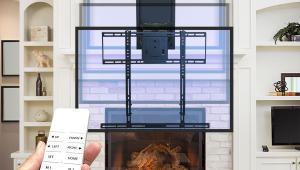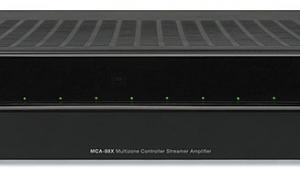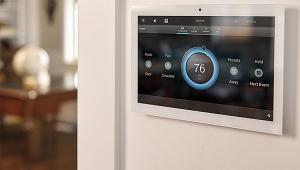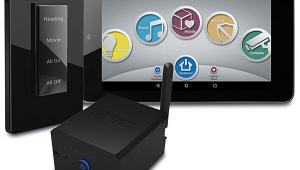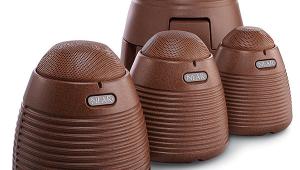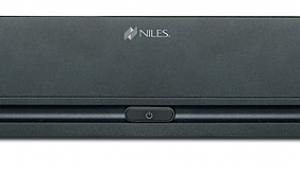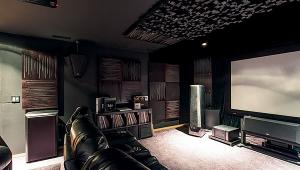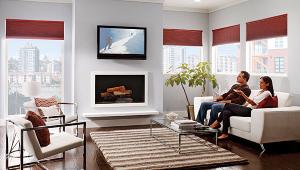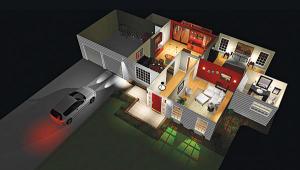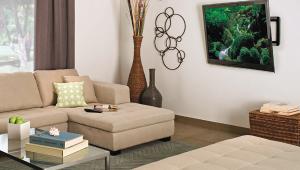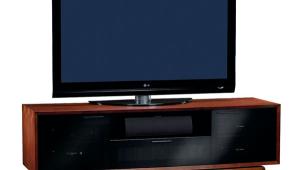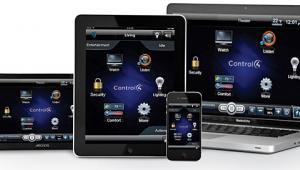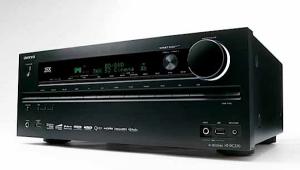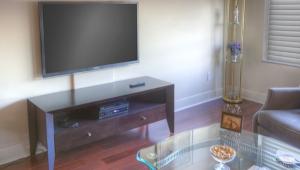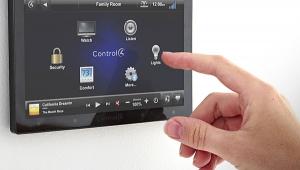Emotion in Motion Page 2
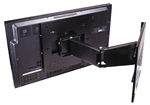 If you have a smaller panel display and are partial to fire poles (and who isn't?), check out Chief Manufacturing (www.chiefmfg.com). Their new FSP single-display pole mount is an innovative alternative to wall-mounting. The FSP allows you to attach your screen to any pole that has a diameter of 1 to 1.5 inches. Pitch adjustments of 10 degrees up and 25 degrees down and a 360-degree yaw adjustment maximize the viewing angle, which is crucial for an LCD panel. The pole allows you to slide the TV into the optimum viewing position. Weight capacity is 45 pounds per bracket, and you can mount the pole either horizontally or vertically. Chief sells the mount only; the pole is not included.
If you have a smaller panel display and are partial to fire poles (and who isn't?), check out Chief Manufacturing (www.chiefmfg.com). Their new FSP single-display pole mount is an innovative alternative to wall-mounting. The FSP allows you to attach your screen to any pole that has a diameter of 1 to 1.5 inches. Pitch adjustments of 10 degrees up and 25 degrees down and a 360-degree yaw adjustment maximize the viewing angle, which is crucial for an LCD panel. The pole allows you to slide the TV into the optimum viewing position. Weight capacity is 45 pounds per bracket, and you can mount the pole either horizontally or vertically. Chief sells the mount only; the pole is not included.
Peerless Industries (www.peerlessindustries.com) addresses tabletop plasma mounting with their Solid Point screen stand. With the twist of a knob, you can tilt the screen 10 degrees forward or 5 degrees back. You can assemble the versatile base for a fixed-position placement or for 360-degree swivel action. The Solid Point is available with a black-graphite-laminate or a maple-laminate base, and Peerless' suggested retail price is $325.
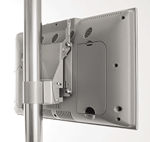 Enough about plasmas. How about CRTs? Although you probably won't find their products stacked in your local A/V shop, custom cabinet people know the name Accuride (www.accuride.com). If your TV lives in a cabinet but you'd like to be able to pull it out and swivel it around, the CB3620-258TV moves a 36-inch-diagonal TV weighing up to 225 pounds as easy as pie. A word of caution: Unless you're experienced with this type of thing, get a professional to do the installation.
Enough about plasmas. How about CRTs? Although you probably won't find their products stacked in your local A/V shop, custom cabinet people know the name Accuride (www.accuride.com). If your TV lives in a cabinet but you'd like to be able to pull it out and swivel it around, the CB3620-258TV moves a 36-inch-diagonal TV weighing up to 225 pounds as easy as pie. A word of caution: Unless you're experienced with this type of thing, get a professional to do the installation.
Need a Lift?
Nowhere is the need for a high-wire solution greater than in the case of a projector flying around your ceiling. If you have an attic or even as little as 5 inches of space over the proposed projector location, consider mounting it on a platform, which disappears from the room on command. Not only will you solve the aesthetic dilemma, but you'll be doing a good thing for your projector. When you give your projector a cozy area in which to sleep when it's not in use, you're protecting it from dust. Whether it's a CRT, DLP, or LCD unit, your projector and lens attract dust, which can harm them. Since projectors are typically the most expensive component in a system, lift-mounting is a smart way to protect your investment, although it's no substitute for regular cleaning.
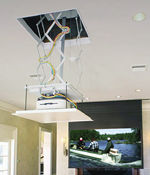 SVS (www.svslifts.com) boasts a 100 percent safety record for their products. Aside from the deep scissor-type mechanisms that lower a projector to a technician's belly level, check out the Mini 5 Series products, which only need 4.5 inches of space above the projector mount. Quite a few manufacturers offer these products, including the screenmakers that I'm about to introduce. These lifts are available in many forms, including hydraulic, rack-and-pinion, Bombay door, scissor, and other permutations. A good session on your favorite Internet search engine will uncover a lot of options. Your local custom installer will have a few favorites. Go with what works, especially if it's a lift with a reputation for reliability. Make sure your installer will be around in the event that you need service. Nothing is more depressing than a lift that doesn't lift.
SVS (www.svslifts.com) boasts a 100 percent safety record for their products. Aside from the deep scissor-type mechanisms that lower a projector to a technician's belly level, check out the Mini 5 Series products, which only need 4.5 inches of space above the projector mount. Quite a few manufacturers offer these products, including the screenmakers that I'm about to introduce. These lifts are available in many forms, including hydraulic, rack-and-pinion, Bombay door, scissor, and other permutations. A good session on your favorite Internet search engine will uncover a lot of options. Your local custom installer will have a few favorites. Go with what works, especially if it's a lift with a reputation for reliability. Make sure your installer will be around in the event that you need service. Nothing is more depressing than a lift that doesn't lift.
From Out of Nowhere
Screen drops are a snap for the main players in the screen business: Da-Lite (www.da-lite.com), Draper (www.draperinc.com), and Stewart Filmscreen (www.stewartfilm.com). One of the beauties of a two-piece projection system has always been the screen's ability to roll up and hide. There are a few ways to achieve this. The most sophisticated is a screen soffit with an enclosure mounted above the ceiling. A slot in the ceiling allows the screen free movement to descend on cue. This option takes some construction dollars and a healthy-sized attic or crawlspace. In the event that you need to remove the unit for service, it mustn't be permanently enclosed.
 Another approach is to wall- or ceiling-mount the screen housing. Since screens are all custom-built, it's a good idea to include a tension guide, which ensures that the screen remains flat when you're using it. Screen drops also give you the option of including customized masking for variable aspect ratios.
Another approach is to wall- or ceiling-mount the screen housing. Since screens are all custom-built, it's a good idea to include a tension guide, which ensures that the screen remains flat when you're using it. Screen drops also give you the option of including customized masking for variable aspect ratios.
Shake It Up, Baby
Enough about moving your equipment. How about you taking a ride? Drawn from flight-simulator technology and theme-park rides, tactile transducers from Clark Synthesis (www.clarksynthesis.com) add the final element of touch to the home theater experience. Clark Synthesis' modules bolt under your seating (sofas, chairs, or even complete rows of theater seats) and connect to your preamp output or subwoofer. All bass response translates into motion energy. With every angry flamenco-dancer stomp, Mickey Hart drum freak-out, or rocket blastoff, you get a jolt.
 Aside from the gimmick appeal, tactile transducers have a very real application. Let's say you want to watch a late-night movie but everyone else in the house is asleep. We all know how bass travels through walls. With a tactile transducer, you can enjoy an enhanced bass ride and not tick off the neighbors or your family. Prices range anywhere from $179 to $2,400 for complete seating. It kind of gives new meaning to the phrase "shaker furniture." Be careful. Overuse can cause a serious nervous condition. Not really, but Clark might market this as a New Age weight-loss item. Who knows? Maybe we'll see them on Lifecycles soon.
Aside from the gimmick appeal, tactile transducers have a very real application. Let's say you want to watch a late-night movie but everyone else in the house is asleep. We all know how bass travels through walls. With a tactile transducer, you can enjoy an enhanced bass ride and not tick off the neighbors or your family. Prices range anywhere from $179 to $2,400 for complete seating. It kind of gives new meaning to the phrase "shaker furniture." Be careful. Overuse can cause a serious nervous condition. Not really, but Clark might market this as a New Age weight-loss item. Who knows? Maybe we'll see them on Lifecycles soon.
There's more to your home-entertainment system than meets the eye or ear. Motion is all around. It's your most powerful tool in controlling your environment and helping your system and your room shake hands and get along.
